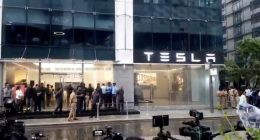If you have ever planned a corporate event, then you know that it’s not an easy task. You need to first determine your target audience, figure out what type of event you want to hold, and figure out if it will be held in-person or virtually.
But let’s say you are doing this for the first time. You may not know how to approach it or what technology would best suit your needs. Here are some emerging technologies that could be helpful when planning your next corporate event.
Event Planning Software
Putting together the ultimate corporate event involves a lot of time and effort. However, with the right event planning platform, you can save so much time that you can actually go back to your core mission or work on the next amazing project.
There are so many things to manage when planning a corporate event, from venue sourcing to catering, attendee tracking, and logistics. But that’s where event management software comes in.
Perfect planning isn’t the only benefit of an event planning platform, but also being able to adjust changes in plans on the fly in unforeseen circumstances. For example, one of your seminar speakers might have their flight delayed, and you’d be immediately alerted to this with an itinerary tracker. You could then alter the program so that entertainment is provided during the delay, or re-arrange the speaking schedules and alert others involved.
The system can also relay important information on the fly, such as whether the server is running low on ice, or if the guest entrance has been forced open.
Virtual Reality
VR has been highly useful in presentations as it allows the audience to experience what you’re showcasing in a much more visual, personal way. For example, consider the real estate industry, where virtual reality is being used to give buyers an idea of what their new home will look like, before it’s built. They can get a virtual tour of the home from a variety of angles and even virtually walk around inside it.
This is useful at corporate events when products are being discussed, and you want the audience to be able to experience the product in as many ways as possible. VR is a lot more immersive than a projector screen and PowerPoint slides.
For example, NRMA Insurance used a virtual “car crash” scenario to give the audience a realistic sense of how their personal vehicle could be impacted by a crash. Instead of sitting at a stationary event, the audience was able to experience what a driver would experience in a car accident as the virtual car flew around them.
This can be useful when you are creating a presentation that will be used to share risk factors with customers in a persuasive way.
Facial Recognition
If your private corporate event has a high number of attendees, and you need security to check everyone’s identification, then facial recognition could be a good option.
A facial recognition system can be easily integrated into your event space, especially for those high-traffic areas like the stage. If someone is suspected to have entered the venue without an invite or badge, it could be detected and the information sent to the right people.
Although it seems like an excessive amount of security, facial recognition is something you want to be prepared for, as it can save your event from a problem.
It will also allow a smoother flow of traffic into the event, as opposed to stopping every single guest and asking them to show their identification. Having to go through such a process is a nuisance and can disrupt the flow of the event and ultimately affect the attendees’ experience.
Conclusion
When it comes to planning the next big event, the options are endless. Use the information here to make the most of your corporate event planning process.
Technology is constantly evolving, and with so many different options, you’ll be able to find the technology that best suits your needs to execute a successful event.



